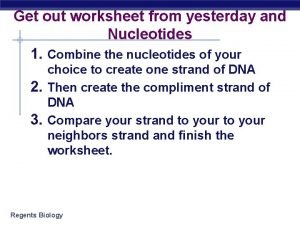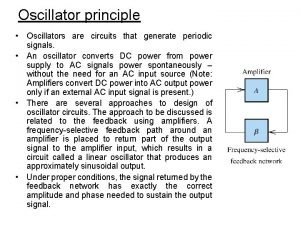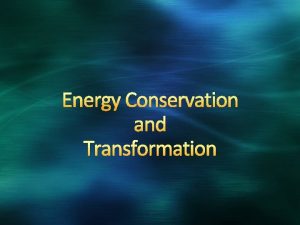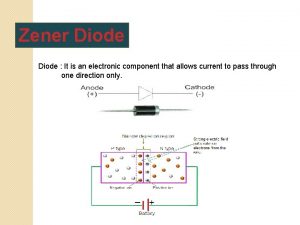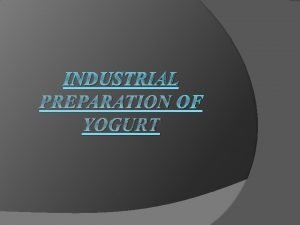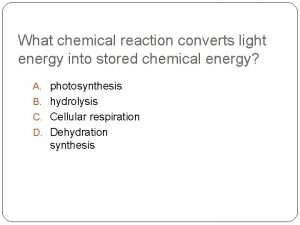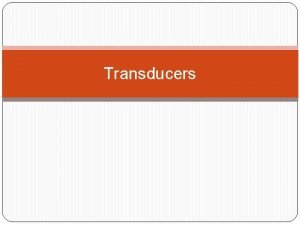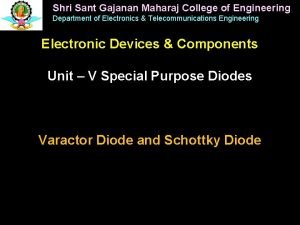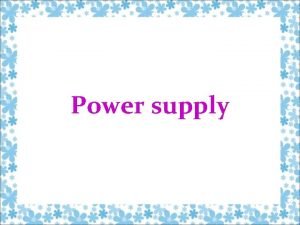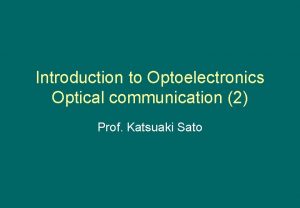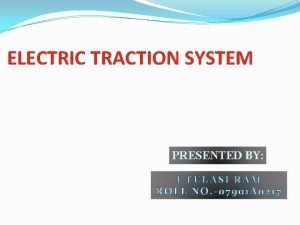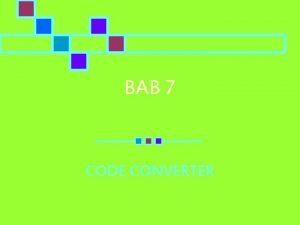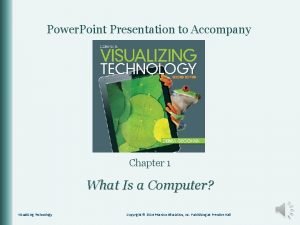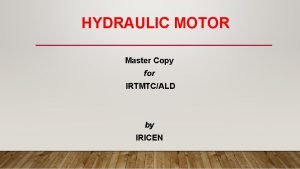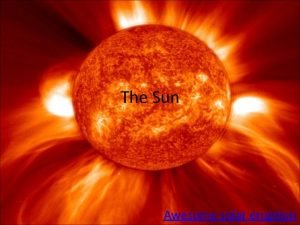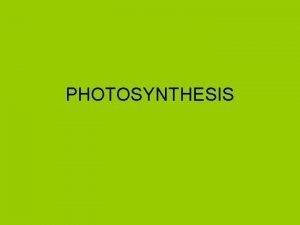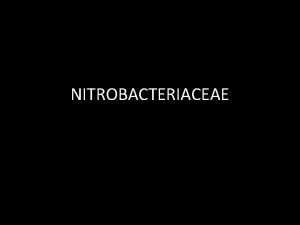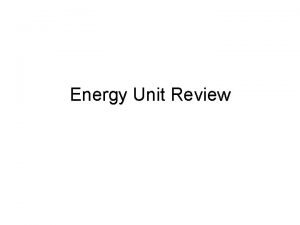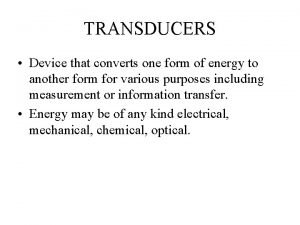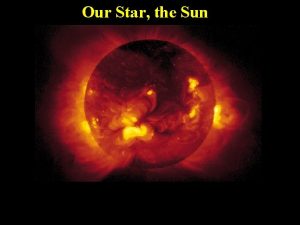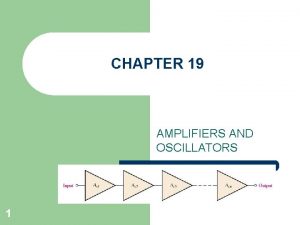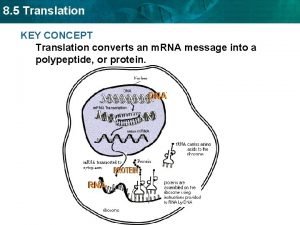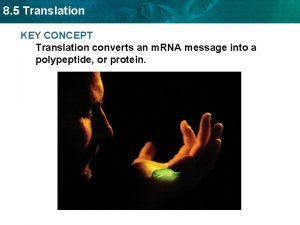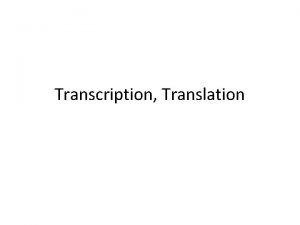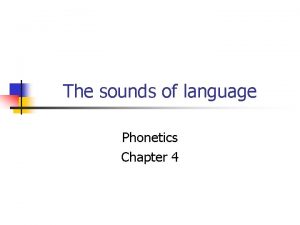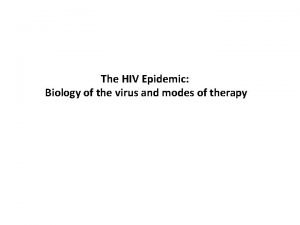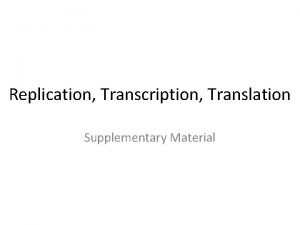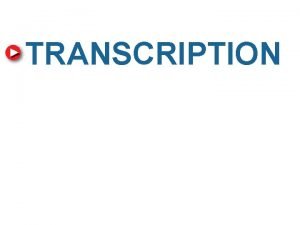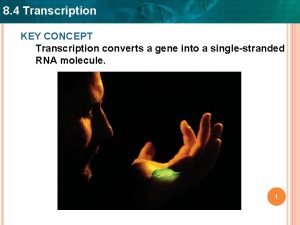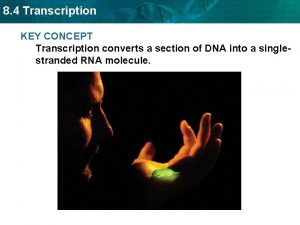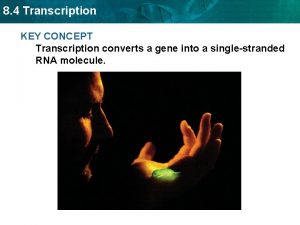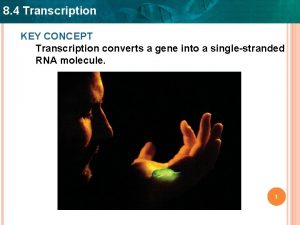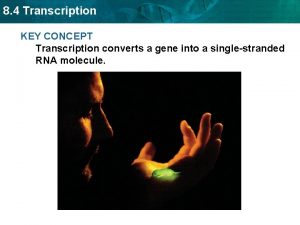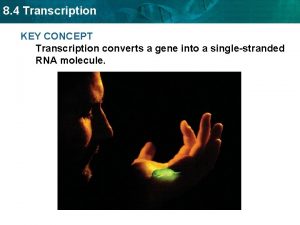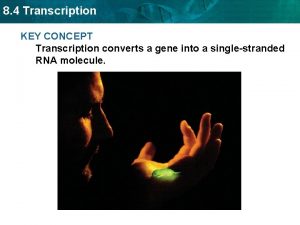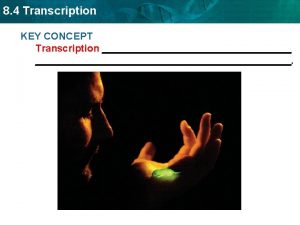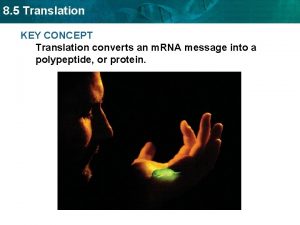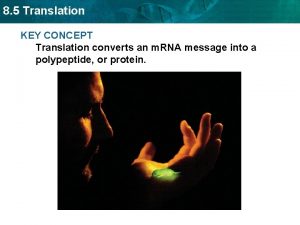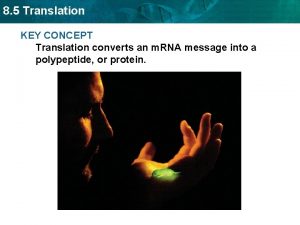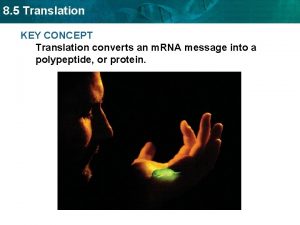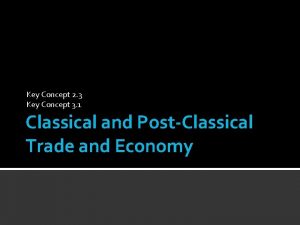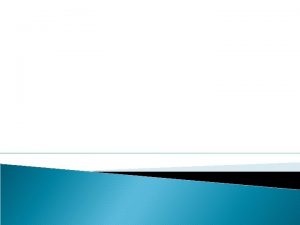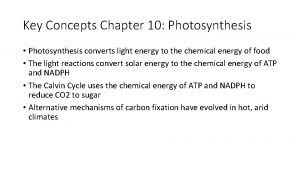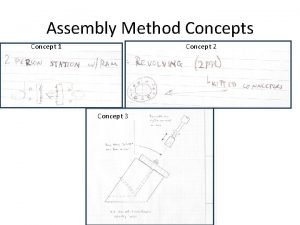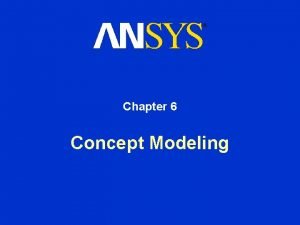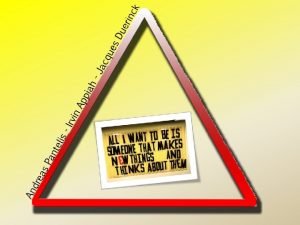TRANSCRIPTION 8 4 Key Concept Transcription converts a




































- Slides: 36

TRANSCRIPTION 8. 4 Key Concept: Transcription converts a gene into a singlestranded RNA molecule.

The CENTRAL DOGMA of biology: • Information flows in one direction: from DNA to proteins • Involves 3 processes: 1. Replication of DNA 2. Transcription of DNA into RNA 3. Translation of RNA into protein

• RNA is the link between DNA and proteins. replication transcription translation

What is RNA? • Ribonucleic Acid • Nucleic acid made from DNA that goes out into the cytoplasm of the cell to help it stay alive

How does RNA differ from DNA? 1. Sugar is ribose 2. Contains the base uracil in place of thymine (A=U) 3. Single-strand of nucleotides

TRANCSRIPTION • Process of copying a sequence of DNA (a gene) to produce a strand of RNA • Occurs in the nucleus

The Transcription Process: 1. A large transcription complex made of RNA polymerase and other proteins recognizes the start of a gene and begins to unwind the segment of DNA. start site transcription complex nucleotides

2. RNA polymerase bonds nucleotides together to make a strand of RNA using DNA as a template **Rules of base pairing for RNA: C=G A=U RNA DNA

3. The completed RNA strand separates from the DNA template and the DNA molecule closes back together. RNA

3 types of RNA: 1. Messenger RNA (m. RNA): carries a message that will be translated to form a protein (made from DNA during transcription) 2. Ribosomal RNA (r. RNA): forms part of ribosomes where proteins are made 3. Transfer RNA (t. RNA): carries amino acids from the cytoplasm to ribosomes to make proteins

Translation 8. 5 Key Concept: m. RNA is translated into a protein.

• What is the complimentary m. RNA strand made from this DNA sequence? A G C G T G C C A

m. RNA sequence: U C G C A C G G U • Read 3 bases at a time: UCG-CAC-GGU • Each set of 3 nucleotides is known as a codon. • Each codon represents an amino acid: • UCG-CAC-GGU Serine-Histidine-Glycine **remember proteins are made of amino acids

The Genetic Code • Matches each codon to its amino acid

The genetic code matches each RNA codon with its amino acid or function.

TRANSLATION • Information from m. RNA is used to make proteins • Takes place on ribosomes in the cytoplasm

Before Translation Begins: • m. RNA is transcribed from DNA in the nucleus and released into the cytoplasm

• Translation begins at a certain codon on m. RNA called a start codon (AUG) and ends with one of three stop codons (UAG, UAA, UGA)

The Translation Process: 1. m. RNA moves through the ribosome. t. RNA (transfer RNA) comes into the ribosme with an anticodon on one end an amino acid on the other and pairs with the start codon (AUG) on m. RNA **anticodon: three bases on t. RNA which match one m. RNA codon Ex. m. RNA codon: AUG Anticodon: UAC


2. A second t. RNA comes in with its amino acid. The ribosome forms a peptide bond between the two amino acids to begin forming a protein. Once each t. RNA has “dropped off” its amino acid it is released into the cytoplasm to pick up another amino acid


3. t. RNA molecules continue to come into the ribosome, bind with m. RNA, and leave amino acids that are bonded together to make a growing protein until they reach a stop codon (UAG, UAA, UGA). When a stop codon has been reached the protein & m. RNA will be released from the ribosome and translation is complete!!



Mutations 8. 7 Quiz on Wednesday 3/12

Mutation • Any change in the DNA sequence • 2 types: gene mutations chromosomal mutations

Gene Mutations: • Changes occur in a single gene • 2 types: 1. ) point mutations 2. ) frameshift mutations

Point Mutations • One nucleotide is substituted for another • EX: Normal: A C T G T T A G C T AC Mutated: A C T G T A A G C T AC *may or may not change the amino acid

Frameshift Mutations • Insertion or deletion of a nucleotide causes the whole sequence to shift • EX: THE CAT ATE THE RAT THC ATA TET HER AT *could change many amino acids

Chromosomal Mutations: • The number or structure of chromosomes is changed • 4 types: 1. ) deletions 2. ) duplications 3. ) inversions 4. ) translocations

Deletions • Lose part or all of a chromosome

Duplications • Extra parts of a chromosome are made

Inversions • Direction of chromosome parts are reversed

Translocations • Part of a chromosome breaks off and attaches to another

Mutagens • Agents in the environment that can change DNA • Ex: UV light, pesticides & other chemicals • Mutations can be helpful, harmful, or neutral
 Transcription and translation practice worksheet answer key
Transcription and translation practice worksheet answer key Key concept summaries answer key
Key concept summaries answer key Lesson 1 introduction to waves
Lesson 1 introduction to waves An oscillator converts
An oscillator converts A hairdryer converts ____ energy into ____ energy.
A hairdryer converts ____ energy into ____ energy. A machine that converts mechanical energy into electricity
A machine that converts mechanical energy into electricity Pn junction diode, converts
Pn junction diode, converts Lactobacillus bulgaricus converts lactose to *
Lactobacillus bulgaricus converts lactose to * ________ converts light energy into chemical energy. *
________ converts light energy into chemical energy. * Mechanical transducer
Mechanical transducer Pn junction diode, converts
Pn junction diode, converts Line regulation
Line regulation Pn junction diode, converts
Pn junction diode, converts State various types of track electrification system
State various types of track electrification system Tabel encoder
Tabel encoder A computer is a programmable machine that converts raw
A computer is a programmable machine that converts raw Hydraulic motor working principle
Hydraulic motor working principle The sun converts matter into energy in what zone
The sun converts matter into energy in what zone Which object converts sunlight into sugars?
Which object converts sunlight into sugars? Nitrobacter
Nitrobacter A pole vaulter first converts kinetic energy into
A pole vaulter first converts kinetic energy into Basic requirements of transducer
Basic requirements of transducer Star
Star An oscillator converts …………….. *
An oscillator converts …………….. * Ribosomes translation
Ribosomes translation Translation converts
Translation converts Key activities canvas
Key activities canvas Key partners
Key partners Actual self
Actual self Pengertian pemasaran
Pengertian pemasaran Transcription end result
Transcription end result Transcription initiation in eukaryotes
Transcription initiation in eukaryotes Place of articulation
Place of articulation Hiv reverse transcription
Hiv reverse transcription Speech phonetic transcription
Speech phonetic transcription Virusmax
Virusmax Transcription translation replication
Transcription translation replication
